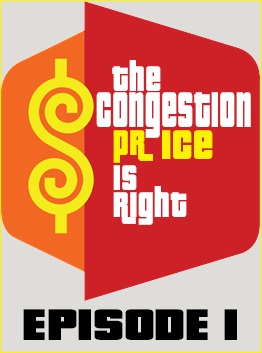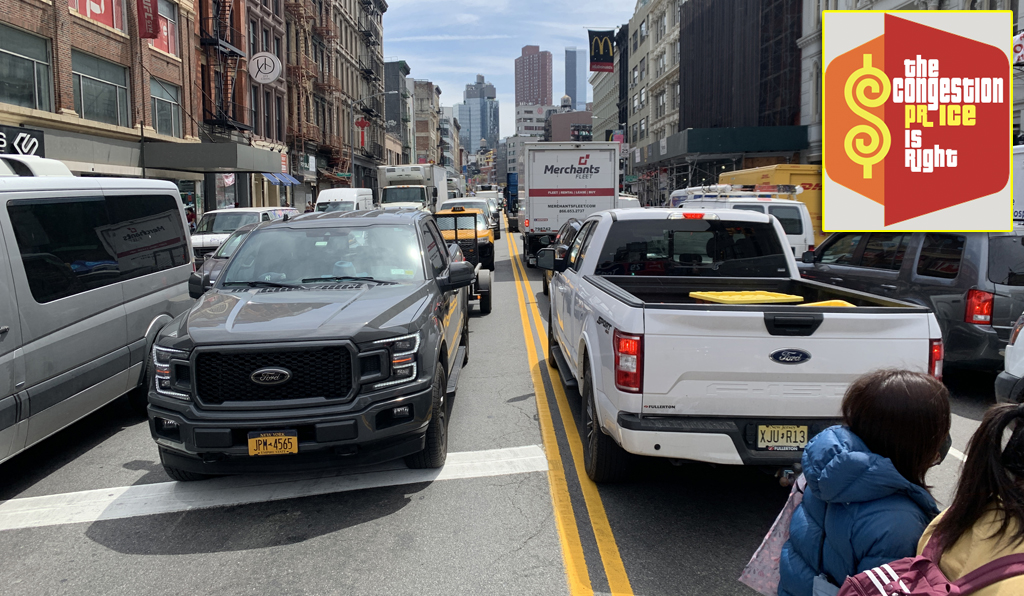
Since Gov. Hochul killed congestion pricing on June 5, the public square has seen lots of half-truths and bald lies about what’s at stake. Over the next few weeks, Streetsblog contributor Charles Komanoff, whose traffic modeling for the state’s Fix NYC task force helped tee up the 2019 legislation, will debunk the myths and make sense of the complexity. His new series kicks off today with straight talk about what New Yorkers stand to lose even if state lawmakers magically fill Hochul’s $15-billion hole in the MTA’s capital budget in some other way.
The Lie: A different $1 billion annual revenue stream for the MTA capital plan can achieve a main goal of congestion pricing — namely, reducing congestion.
Where the Lie Comes From: It's the demon offspring of people who claim that all that Gov. Hochul must do now is find $15 billion in new revenue to replace the missing congestion pricing money. Former MTA Chairman Joe Lhota doesn’t care about the “congestion” part of the program, just the “pricing” part. And Hochul herself has suggested that funding transit alone is her only job now.
Truth: Funding transit without a robust congestion toll will leave congestion pretty much as is ― New York will remain the globe’s most gridlocked city. Investing in public transit is something we must do, obviously, but simply directing $1 billion per year to better transit without a toll will boost traffic speeds in the most-congested part of the city by only 2.5-3.0 percent on average.
Explanation: The imperative of the toll is simple: at any moment in Manhattan, there are thousands of potential car trips that car-owners and Uber habitués don’t make because they know that traffic is intolerable. Clearing out road space — whether through a toll or better subway service — would shift these would-be car users’ time-equations toward driving, eating into the initial traffic reduction.
My modeling indicates that this “rebound effect” annuls around 60 percent of any policy’s immediate gridlock-busting impact. The good news: with a robust fee like the $15 congestion price that Hochul just tossed in the trash, the initial speed-up in CBD traffic would be so huge ― 30 percent by my modeling ― that even after accounting for the rebound effect, traffic speeds still increase by a healthy 12 percent.
In contrast, consider the Hochul hypothetical: a $1-billion-a-year revenue stream from somewhere other than a toll. In that universe, the transit improvements would yield only a 6.5-percent immediate speed gain. Why? Because better subways don’t lure large enough numbers of drivers out of cars; their primary value is in making daily travel better for the millions who already use trains.
Accounting for the rebound effect, the speed improvement from mere transit investment alone is a mere 2.5-3.0 percent (the 6.5 percent immediate speed gain, less the 60 percent that the rebound takes away). So just funding transit alone creates a minor speed improvement that is many times less than the 12 percent that will come from improving transit with congestion pricing.
Modeling assumptions
All calculations were made with June 22 version of Komanoff’s BTA spreadsheet (downloadable 20 MB Excel file) running the scenario “MTA 15/3.75 Approved.” To reflect capital-improvement lead times, figures only take half credit for NYC Transit’s $12 billion (its 80% share of mandated $15 billion) investments (in Policy Levers tab, Row 229, I switched credit to “HALF” in column G corresponding to toll plan recommended by TMRB and approved by MTA board.) To model transit investments without congestion pricing, I zeroed out Cells G41-G45 and G48-G51 in same Policy Levers tab, as well as Cells G159 and G193 (to eliminate the new FHV surcharges). To turn off rebound effect, I zeroed out Cells G68, G70 and G73 in Elasticities tab. All results appear in Results tab.






